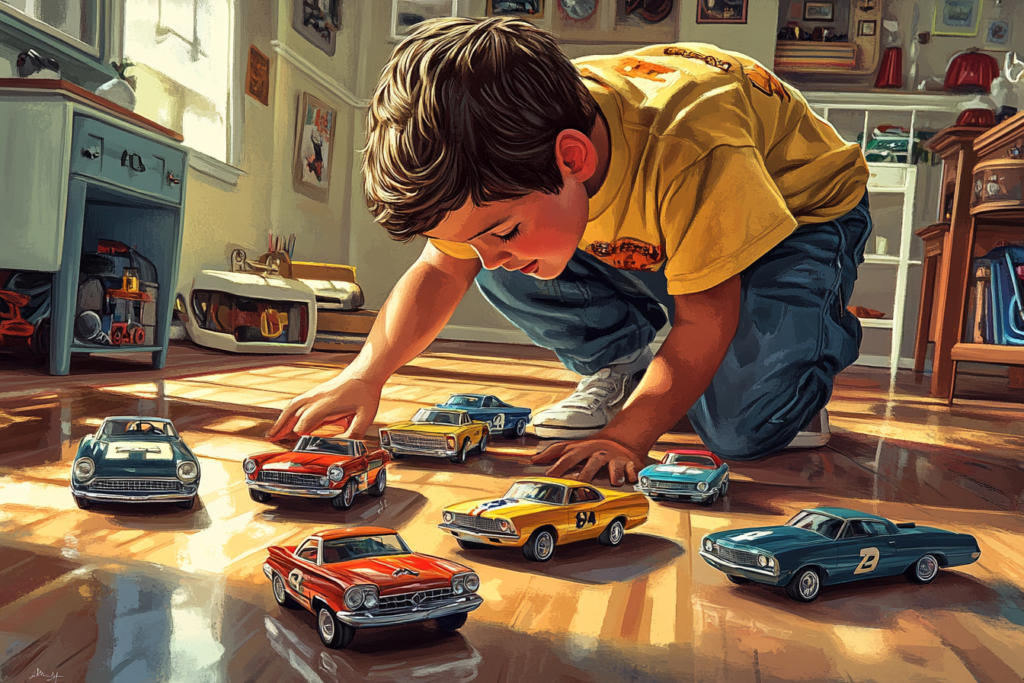
Stopping by the grocery store closest to my home yesterday to grab coffee cream, something got my wheels turning.
At the customer service desk near the checkouts, mixed in with the impulse buys and grab-and-go items, was a large display of Hot Wheels cars.
Not tucked away in some corner. Prominently featured, primo real estate, right where EVERY parent and kid will see them.
The same brand I played with half a century ago.
Think about that for a sec.
These tiny die-cast cars haven’t fundamentally changed since 1968. Same basic design. Same price point (adjusted for inflation).
Same core promise of speed and imagination.
The brand was born when Mattel co-founder Elliot Handler noticed his son playing with British-made Matchbox cars, but constantly complaining about their wheels. They didn’t roll well enough.
Handler assembled a team including a real GM car designer and a rocket scientist to create cars with a new kind of wheel bearing. They made them faster, flashier, and more like the hot rods kids saw on American streets.
That focus on pure performance — on being the fastest little cars in the world — created an instant hit. Within the first year, Mattel sold 16 million Hot Wheels cars.
And they never lost sight of that original mission: make desirable toy cars that roll really, really well.
In a day when many toys become obsolete in months, how does a simple metal car maintain such a powerful hold on generation after generation?
It’s a schoolin’ in what I call the “eternal flip” — when a product moves from want to need not just for one customer, but for entire generations of customers.
Hot Wheels nailed several timelessness elements:
- Perfect price point for parent impulse purchases (any occasion, not just big ones)
- Collectibility without artificial scarcity
- Compatibility across decades
- Simple but satisfying play value for any user
- Durability that creates hand-me-down nostalgia
Now here’s what’s really brilliant: They never tried to be more than they are. No major tech additions. No complex app integration. No “educational” pivot.
Just speedy little cars that spark imagination.
Action for today: What’s the core value of your product that would be worth preserving for 55 years? Are you enhancing that value, or diluting it with unproductive “innovations”?
Looking to build lasting product value? Let’s explore what makes products truly timeless — hit reply.
Laurier
Product Payoff: On the subject of toys with staying power: Fisher-Price took a risk in 1961 by making all its Little People figures the same size in all uses. Parents thought it limited creativity. Instead, it created an ecosystem of perfectly compatible toys that still drives sales (and fit together) six decades later.
